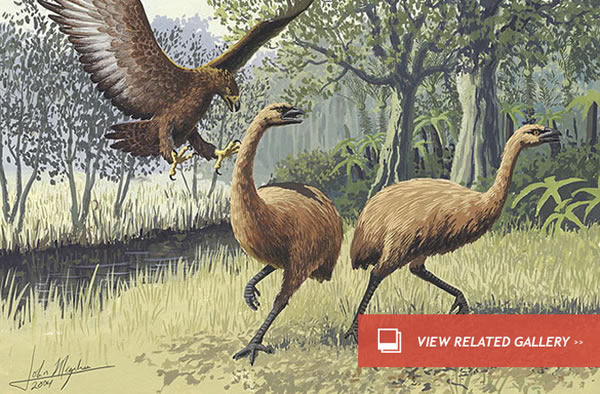Fossil Poo Reveals Where Ancient Giant Bird Ate
Being 12 feet tall and weighting 500 pounds didn’t save the giant moa (Dinornis robustus) from extinction, along with 11 smaller moa species on the islands of New Zealand. The ancient Maori, who may have hunted the massive flightless birds to extinction, probably knew well the moas’ favorite habitats.
But, for modern biologists, how moa’s used and shared the environment remained a mystery. Now poop has helped scientists decipher the mysterious movements of the moa.
Researchers analyzed pollen and other clues in fossilized feces from four species of the extinct bird. Each species’ feces contained different mixtures of plant remains. By matching the fossil plant species mixture with modern habitats, the researchers traced where the birds spent their time, before they disappeared in the early 1400s.
The giant moa (Dinornis robustus) fed in the transition zone between forests and grassland.
A smaller bird, the upland moa (Megalapteryx didinus), ate a more generalist diet with a mixture of foods from both woods and fields.
The bush moa (Anomalopteryx didiformus) grew to 1.3 meters (4.3 feet) tall while feeding mostly in the forest.
The heavy-footed moa (Pachyornis elephantopus) trod the grasslands of ancient New Zealand while it ate.
Thousands of hungry 10-foot tall birds likely had a major influence on the plant life of New Zealand. After the the extinction of the moa, the authors noted that no other animal followed in the massive footprints of the moa. Without its primary herbivore, the plant life of New Zealand may have suffered an ecological shock.
The study was published in the Proceedings of the National Academy of Sciences.
IMAGE: Haast’s eagle attacking New Zealand moa. (John Megahan, PLoS Biology, Wikimedia Commons)(Sep 30, 2013 03:00 PM ET // by Tim Wall)












